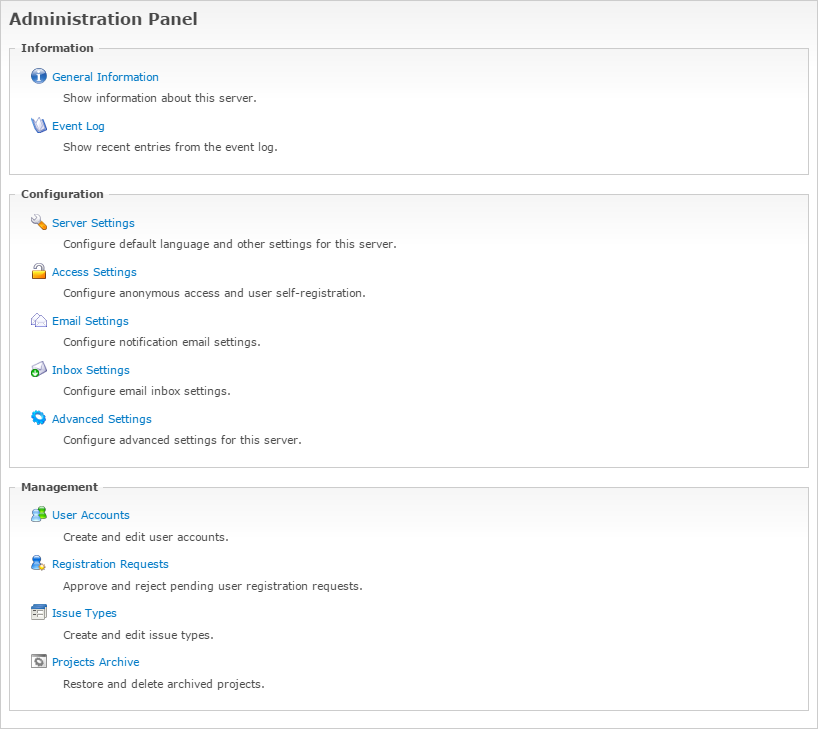 WebIssues Manual
WebIssues Manual
Version 1.1.5
This chapter describes topics related to the administration of projects and users, and system maintenance.
Most of the activities related to the administration, maintenance and configuration of the system can be performed through the Administration Panel. The exceptions are operations associated with projects and folders management, which can be performed directly in the main window.
To access the Administration Panel in the Web Client, click Administration Panel in the upper right corner of the window. This option is available only to users with server administrator privileges.
The Administration Panel is divided into the following modules:
- General Information
-
Displays information about the WebIssues server, the database and the environment in which the server is running. See the section called “Server information”.
- Event Log
-
Allows viewing events from the event log of the WebIssues server. See the section called “Event log”.
- Server Settings
-
Allows configuring the language settings, and other settings of the WebIssues server. See the section called “Server settings”.
- Access Settings
-
Allows configuring anonymous access and user self-registration. See the section called “Access settings”.
- Email Settings
-
Allows configuring the settings of notification emails. See the section called “Sending emails”.
- Inbox Settings
-
Allows configuring the email inbox for receiving emails. See the section called “Email inbox”.
- Advanced Settings
-
Allows configuring the remaining settings of the WebIssues server. See the section called “Advanced settings”.
- User Accounts
-
Allows managing user accounts of the WebIssues server. See the section called “Managing users”.
- Registration Requests
-
Allows approving or rejecting user registration requests. This module is available only if user registration was enabled in server settings. See the section called “Registration requests”.
- Issue Types
-
Allows customizing issue types and public views. See the section called “Managing issue types” and the section called “View settings”.
- Projects Archive
-
Allows managing archived projects. See the section called “Archiving projects”.
In the Desktop Client it is possible to administer users and projects and to manage issue types and views. The Users and Types commands are available directly from the main window's toolbar. However, the full Administration Panel is not available. In order to access the event log or change system settings, you must therefore use the Web Client.
